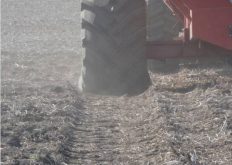Q: What factors should I consider when using soil test results for fertilizer recommendations?
A: Using the three-legged stool analogy, the three legs of a good soil test are a good collection of the sample, the choice of an appropriate lab and the final interpretation of results.
There is risk to variance and error in each step, so we should never assume the result is absolutely correct, but rather a useful tool to determine the right rate of fertilizer use for your farm, fields and crops.
Read Also

Claas brings 1000 Series SP forage harvesters to Canada
In mid-August, Claas unveiled its new line of Jaguar forage harvesters at an event in Visalia, California, deep in the heart of that state’s dairy region.
A recommendation of fertilizer based on a soil test should not be a simple answer. Soils are variable, farm management is variable and risk per farm varies. It is easy to recommend excessively high rates of fertilizer, but we need to consider farm economy and the local environment in the recommendations.
Before providing the “final answer” for a fertilizer recommendation, these tips will help lead you to better conclusions:
- Soil tests provide averages of nutrient levels within the area you sample. If you sampled about 15 cores, the variance of the results will be about 25 to 30 per cent. If your soil test indicates 50 pounds of nitrogen per acre, it is more likely in a range of 35 to 60 pounds of nitrogen. This is still accurate enough to provide a good recommendation.
- There tends to be a bias toward high nutrient levels in small areas of a field. If your soil test indicates a low level of a nutrient, the result is likely right. If the average nutrient level is high, it may be due to one or two samples with very high levels. This can lead to fertilizer recommendations that are too low.
- One of the biggest errors made in recommendations is the target yield. Be reasonable and set target yields that you know can be produced on each field. A target yield of 10 to 15 per cent higher than your 10-year average yield is reasonable.
- Always consider field history: past crop rotations, manure application and fertilizer rates. For example, if a soil test indicates 50 pounds of nitrogen per acre, recommendations will be different depending on whether the past crop was a forage legume or wheat- canola rotation.
- Recommended rates should also consider application methods — low rates of potassium or phosphorus near the seed row are far more efficient than if broadcast.
These are only a few of the steps to consider when using a soil test to provide a good fertilizer recommendation. Soil tests are a valuable tool, but you need to sharpen that tool with a good understanding of soil, agronomy and the economy of each farm and field.
– Lyle Cowell, PAg, CCA, is the manager of agronomy solutions in northeast Saskatchewan for Nutrien Ag Solutions.














